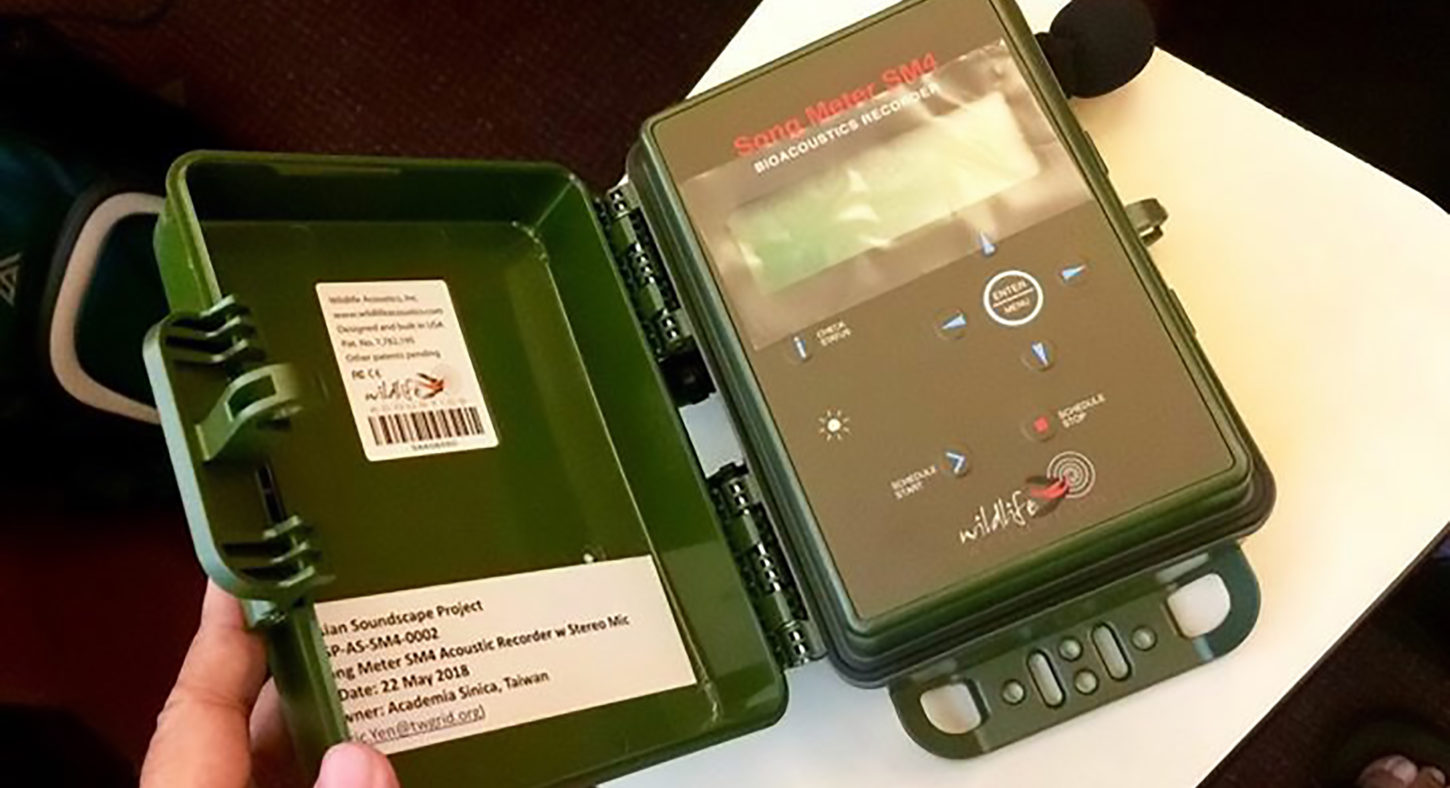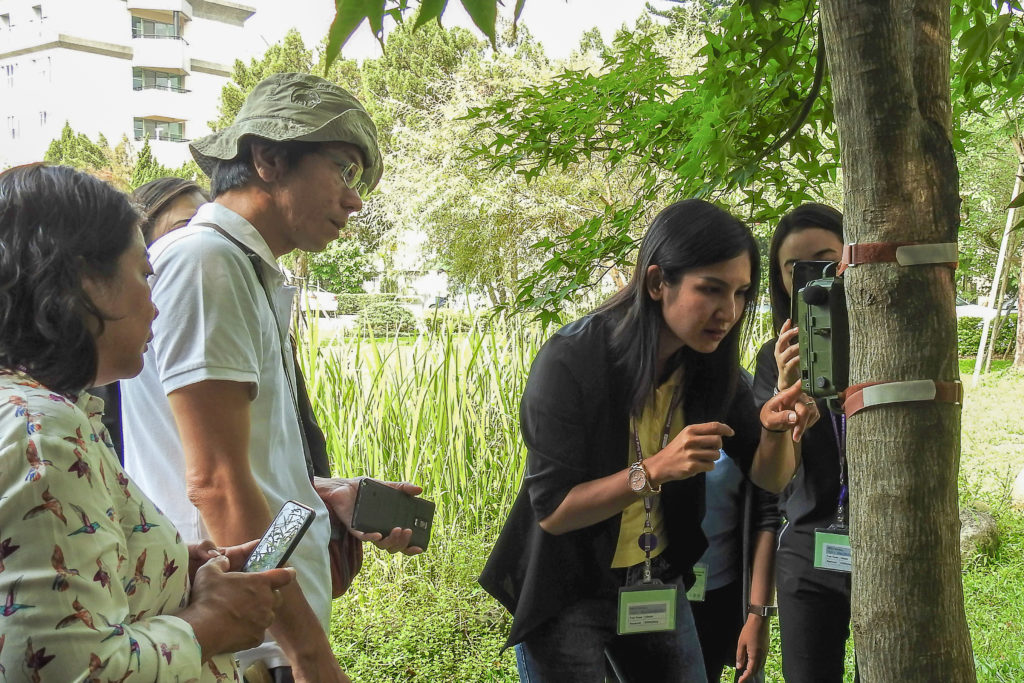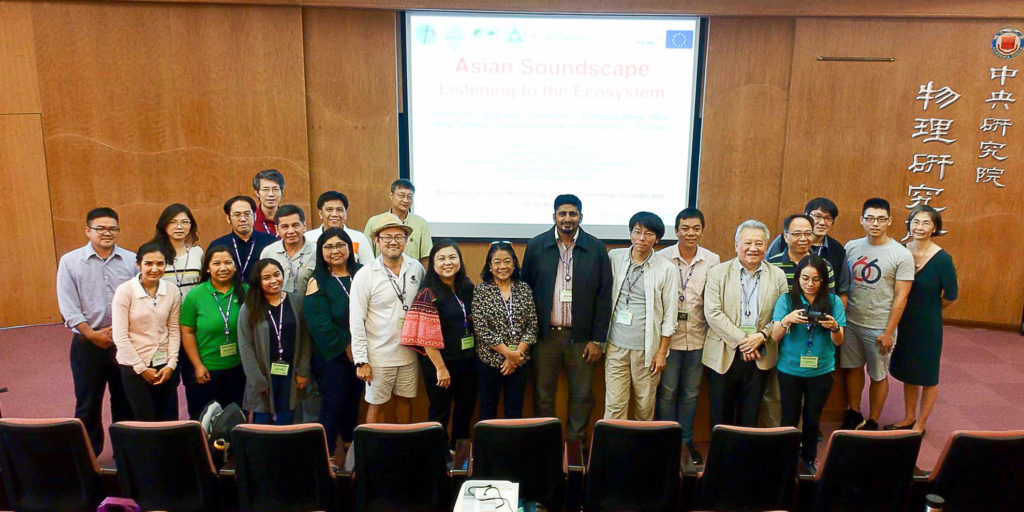ACB joins in monitoring the Asian Terrestrial Soundscape for biodiversity conservation

Recent studies have shown that long-term monitoring of soundscape across sites, countries, regions, and the globe is crucial for studying the changes in environment and biodiversity across scales. Sound can be visually represented through a spectrum of frequencies as they vary with time. This visual representation is called a spectrogram.
Audio spectrograms can be used to identify various calls of animals, and analyzing changes in animal sounds across an area through time with the stable support of information technology can contribute to long-term biodiversity monitoring.
Long-term soundscape monitoring will generate huge amounts of acoustic data and associated metadata. It raises the big data challenges to persistent archiving, visualizing, analyzing, and sharing the soundscape data. An open platform based on distributed storage and computing can be a good way to solve these challenges. An open soundscape archive with web applications is also an ideal platform for collaborative research across disciplines, such as biodiversity, nature conservation, aesthetics, socio-economy, environmental psychology, and environmental education by sharing the soundscape data and using the provided application services.
This year, from 29 to 30 May, representatives from the Biodiversity Information Management Unit of the ASEAN Centre of Biodiversity (ACB) attended the Workshop on Joint Monitoring of Asian Terrestrial Soundscape in Academia Sinica in Taipei, Taiwan. The workshop, which was also attended by participants from the Walailak University of Thailand, the Forest Research Institute of Malaysia, and the Southern Institute of Ecology of Viet Nam, achieved the following goals: a) introduced the project to the invited partners to collaborate on expanding the network; b) introduced the progress on improving biodiversity monitoring through soundscape information retrieval from the network; c) shared experiences on soundscape monitoring from established partners in Malaysia, Thailand, and Viet Nam; d) re-examined and revised the protocol for monitoring the terrestrial soundscape in the network; and e) trained current partners on deploying the new sensors in the field and archiving acoustic data to the open platform.
At the workshop, ACB staff were trained to set up and use the sound recorders, deploy and retrieve them from the field and analyze the data. Such soundscape information is envisioned to be relevant beyond the monitoring of animal sounds, extending to animal dynamics, synchronization of predator and prey relationships, pollinators and flowering seasons, impacts of human activities, sounds and climate changes and other applications. This advanced skill will benefit the ASEAN Member States in terms of improving the monitoring of its soundscape, the resulting information of which will inform policy and decision makers and the public in understanding the impacts of extreme weather events, progress of conservation through time, and animal–habitat dynamics, among others.
The first Asian soundscape workshop was organized by the Taiwan Forestry Research Institute and the Grid Computing Center of Academia Sinica (ASGC) in 2014; this was also the year when the Asian Soundscape Network was initiated. Since then, more than 20 terabytes of soundscape recordings have been collected and archived by the network with partners from Malaysia, Taiwan, Thailand, and Viet Nam.
To further extend the Asian soundscape monitoring network, the Asia@Connect project of the European Commission continues to support training events to expand the monitoring network by inviting more partners from ASEAN countries to deploy new acoustic sensors in each partner country. This project also supports ASGC to develop an open platform based on Grid infrastructure facilitating the open science of soundscape research.


